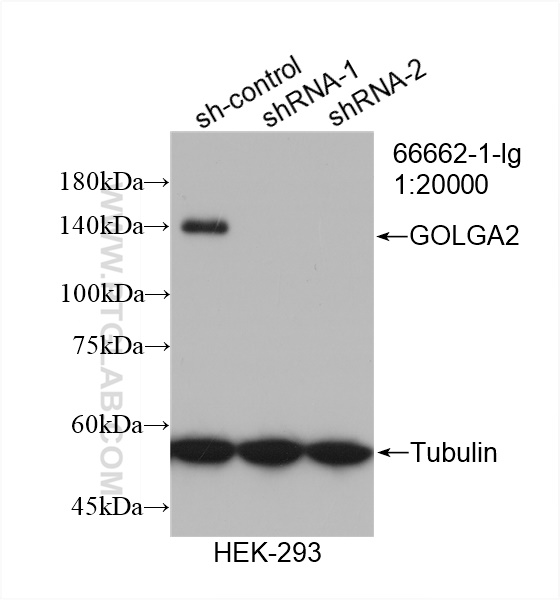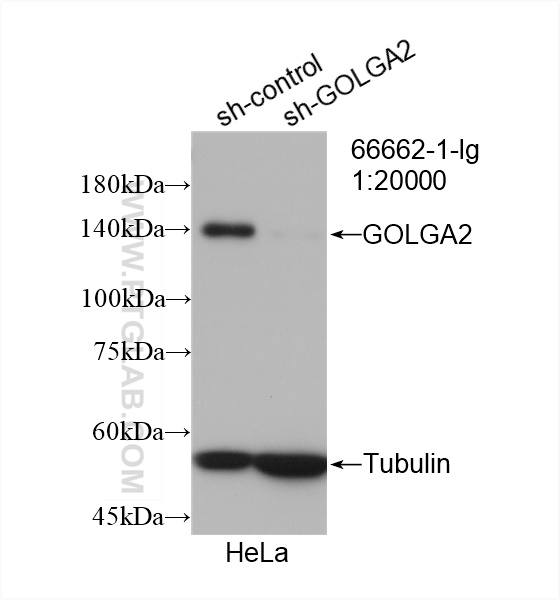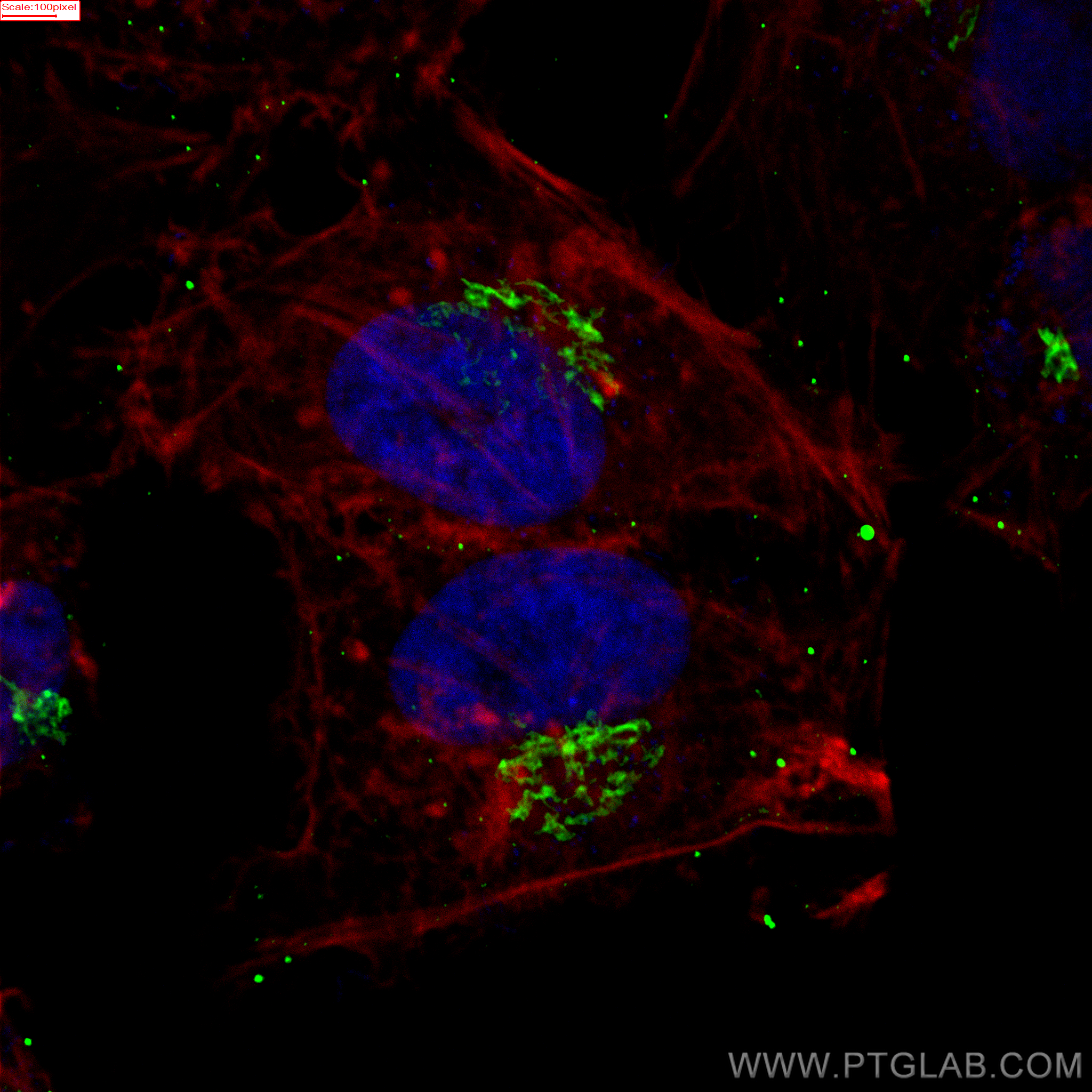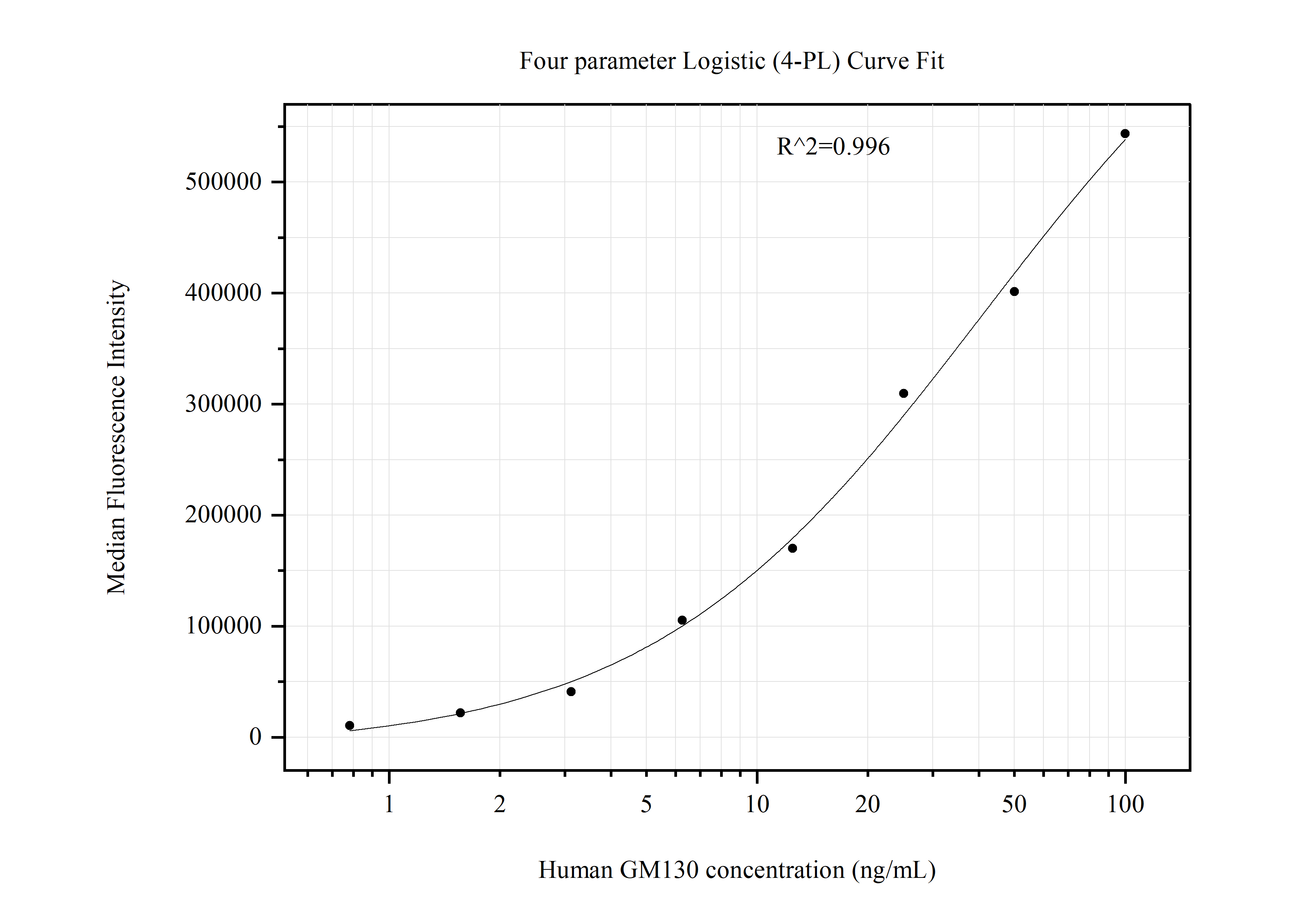验证数据展示
产品信息
66662-1-PBS targets GOLGA2/GM130 as part of a matched antibody pair:
MP51313-1: 66662-1-PBS capture and 66662-3-PBS detection (validated in Cytometric bead array)
MP51313-2: 66662-1-PBS capture and 66662-3-PBS detection (validated in Cytometric bead array)
Unconjugated mouse monoclonal antibody pair in PBS only (BSA and azide free) storage buffer at a concentration of 1 mg/mL, ready for conjugation.
This conjugation ready format makes antibodies ideal for use in many applications including: ELISAs, multiplex assays requiring matched pairs, mass cytometry, and multiplex imaging applications.Antibody use should be optimized by the end user for each application and assay.
| 经测试应用 | WB, IF/ICC, Cytometric bead array, Indirect ELISA Application Description |
| 经测试反应性 | human, rat |
| 免疫原 |
CatNo: Ag1848 Product name: Recombinant human GM130;GOLGA2 protein Source: e coli.-derived, PGEX-4T Tag: GST Domain: 361-678 aa of BC014188 Sequence: LRAQLSLMAHPGEGDGLDREEEEDEEEEEEEAVAVPQPMPSIPEDLESREAMVAFFNSAVASAEEEQARLRGQLKEQRVRCRRLAHLLASAQKEPEAAAPAPGTGGDSVCGETHRALQGAMEKLQSRFMELMQEKADLKERVEELEHRCIQLSGETDTIGEYIALYQSQRAVLKERHREKEEYISRLAQDKEEMKVKLLELQELVLRLVGDRNEWHGRFLAAAQNPADEPTSGAPAPQELGAANQQGDLCEVSLAGSVEPAQGEAREGSPRDNPTAQQIMQLLREMQNPRERPGLGSNPCIPFFYRADENDEVKITVI 种属同源性预测 |
| 宿主/亚型 | Mouse / IgG1 |
| 抗体类别 | Monoclonal |
| 产品类型 | Antibody |
| 全称 | golgi autoantigen, golgin subfamily a, 2 |
| 别名 | GM130, GOLGA2, 130 kDa cis-Golgi matrix protein, 2A4F11, GM130 autoantigen |
| 计算分子量 | 111 kDa |
| 观测分子量 | 130 kDa |
| GenBank蛋白编号 | BC014188 |
| 基因名称 | GM130 |
| Gene ID (NCBI) | 2801 |
| RRID | AB_2882017 |
| 偶联类型 | Unconjugated |
| 形式 | Liquid |
| 纯化方式 | Protein G purification |
| UNIPROT ID | Q08379 |
| 储存缓冲液 | PBS only, pH 7.3. |
| 储存条件 | Store at -80°C. The product is shipped with ice packs. Upon receipt, store it immediately at -80°C |
背景介绍
GOLGA2, also known as GM130, is a 130 kDa cis-Golgi matrix protein which is one component of the detergent and salt resistant Golgi matrix. It is a peripheral membrane protein highly bound to Golgi membrane and localized mainly at the cytoplasmic face of cis-Golgi membrane. Together with its interacting partner proteins, including p115, giantin, GRASP65, and Rab GTPase, GOLGA2/GM130 is involved in the regulation of ER-to-Golgi transport and also in the maintenance of the Golgi structure. Emerging evidence suggest that the GOLGA2/GM130 has potential roles in the control of glycosylation, cell cycle progression, and higher order cell functions such as cell polarization and directed cell migration. (PMID: 20197635)










